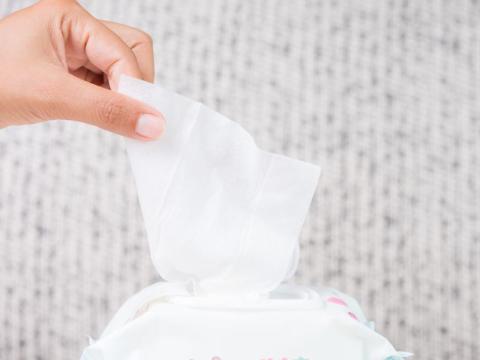Water-dispersible paper, also known as water-soluble paper or fast degradable paper, is an environmentally friendly paper material designed for specific applications. It uses special fibre raw materials and manufacturing processes to ensure that it can decompose, dissolve or naturally degrade quickly in contact with water without burdening the environment. This characteristic makes dispersible base paper ideal for disposable hygiene products, packaging materials, etc., especially in application scenarios where sustainability and reduction of environmental pollution are emphasised.
Features
- Rapid degradability: Compared to traditional paper, Water-dispersible paper can be completely decomposed in water in a relatively short period of time (usually within a few minutes), which greatly reduces the time and environmental impact of waste disposal.
- Eco-friendly materials: Natural plant fibres such as wood pulp and bamboo pulp are used as raw materials in the production of Water-dispersible paper, avoiding the use of plastic additives and ensuring that the products are biodegradable and environmentally friendly.
- Lightweight and strong: Although easy to decompose, Water-dispersible paper can still maintain sufficient strength and durability to meet various needs in the process of use through a special process.
- No residue: dissolved without leaving residue, do not block the sewerage system, and will not cause pollution of water quality, is the ideal short-term use of the product that is discarded after the material.
- Multi-functional applications: suitable for a variety of fields, including but not limited to personal hygiene products (such as wet wipes, toilet seats), food packaging, medical supplies packaging, agricultural mulching film, and so on.
Applications
- Personal care products: such as wet toilet paper, baby wipes, etc. Throwing them directly into the toilet after use makes it easy for users to dispose of them and also reduces the pressure on the waste disposal system.
- Catering packaging: used to make disposable beverage cups, tableware, etc., especially the outer packaging of cold drink cups, which is both convenient and environmentally friendly, and reduces the generation of plastic waste.
- Medical supplies: such as the lining of disposable masks, medical pads, etc., which can ensure hygiene and safety, as well as convenient disposal and environmental friendliness after use.
- Agricultural applications: Used as biodegradable mulch film, it helps the soil to breathe and reduces the problem of plastic residue at the same time, which promotes the sustainable development of agriculture.
- Travel goods: portable toiletries packaging, travelling wipes, etc., which are convenient to use during the journey and reduce the environmental burden in tourist attractions.
Product Category




